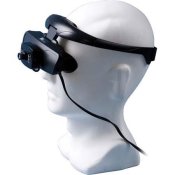Thanks. But I think the main problem is making the corners hit the take up slots straight and both at the same time.Although this was not addressed at me, I'll provide some form of answer. Some or all of which has probably already been stated in the 100+ posts so far.
- Dry and clean reels. Rinse in warm water after the film has been put to hang. Separate the two halves for easier/faster drying. Periodically wash in hot 1% sodium carbonate, or dishwasher cycle.
- I don't separate the film from the paper before starting with the reel. Not so keen to deal with the untamed film winding onto itself in the dark. Unwind to the start (end, actually) of film. Let the reel rest on the table, providing some tension by its weight. Diagonally cut the corners by a few mm. Gently curve the leader (tail) of the film onto the edges of the spiral, just in front of the "entrance"; the curvature keeps the film in check.
- Pull (not push) the film through the ball bearing gates, and a few inches beyond.
- One half of the spiral in each hand. Thumbs pressing the film onto the edges in front of the gate. Don't push above the void between the reels. Start alternate rotations.
- Geeently pull the tape from the film. Not keen to let the tape (potentially) free itself and float in the developer. And the fireworks from tribo-electricity may be fun, but with film, no thank you; seems to me that film manufacturers have worked on that and the static is far less than a few decades ago.
The other stuff is pretty much given.
It can feel like trying to thread a needle in the dark.
Very little feedback that you are on the right or wrong track (pun intended).
The film cups and curls in all directions that you have no chance of anticipating.
I found that doing one corner, then holding it dead still with two fingers and then securing the other corner works 90% of the time.
Folding over the tape of the leader end also helps tremendously in keeping the front stiff and straight and aiding tactility.
Having the film fall out off the feed track can also be a problem.
But can be mostly avoided by pointing the tracks down and letting gravity assist while holding the roll either naked, de papered with pinkies inserted or just dangling.
Last edited:



 ... oh and practice, practice, practice.
... oh and practice, practice, practice.
